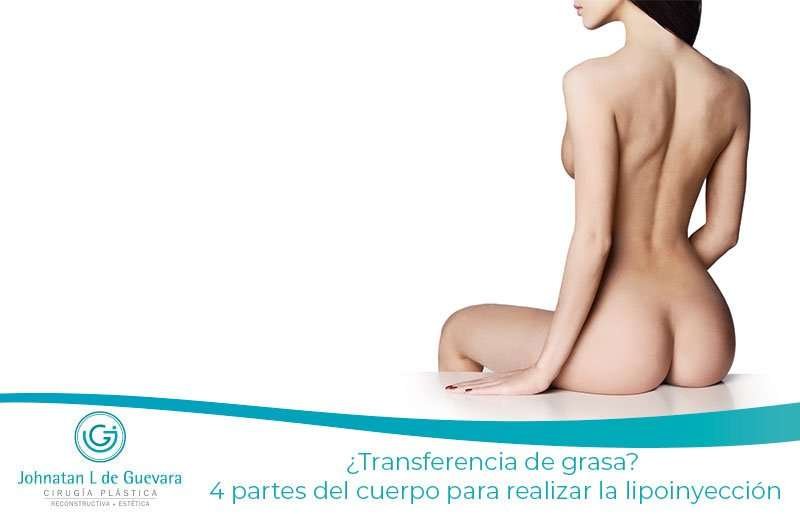Have you heard of fat grafting or lipoinjection? Countless women and even men want to have their body curves shapely. To achieve their goals, they change their diet, exercise and undergo plastic surgery.
To have round and toned buttocks, thick thighs, a more symmetrical face, it is not necessary to have a silicone implant. Today, it is possible to use your own localized fat to fill out and augment parts of your body with lipoinjection. A quick procedure that has given great results to our patients.
What is fat grafting or lipoinjection?
Lipoinjection is a plastic surgery technique in which a qualified physician performs liposuction in a certain region of the body to eliminate excess fat. Then, this fat is separated from the blood and other fluids to be grafted through a needle, with microinjections in the place desired by the person.
Grafting can be performed on the buttocks, facial grooves, thighs, hands, feet and breasts, giving greater harmony to the body.
How does lipoinjection work?
Initially, the person receives general, epidural or local anesthesia, depending on the amount of fat to be removed. Small cuts are made in the regions already marked, to infiltrate a saline solution and adrenaline, in order to reduce bleeding and fat displacement.
A cannula is introduced into the fat layer to be aspirated by a vacuum system. The place where the cannula is placed changes according to the patient’s anatomy.
The fat is then treated to separate the broken cells, blood and anesthetic. In this way, fine syringes are introduced into the desired region of the body to give the desired shape to the person. The lipoinjection procedure lasts between 1 and 3 hours, depending on the size of the intervention.
What parts of the body can receive the fat itself?
To have the desired appearance and high self-esteem, the technique is indicated and can be performed in the following regions.
1. Facial liposuction
Indicated to reduce expression lines, wrinkles, give volume to the cheeks and improve facial harmony.
2. Breast Lipoinjection
To give a softer and more natural look, fat can be placed in the breasts to increase the volume, disguise the silicone prosthesis and also correct some deformity.
3. Lipoinjection in buttocks
It is used to correct the size of the buttocks or increase their size. Even to lift it, the surgeon can also enlarge the thighs to make them more aesthetic.
4. Lipoinjection in hands and feet
As people age, they lose fat tissue and muscle tone, and bones and veins become evident, depending on the case, fat grafting alleviates the problem.
What is the preoperative period like?
In order to perform a surgical procedure, a preoperative period is necessary to reduce the existing risks, both of the surgery and of the anesthesia. The patient must receive all the necessary information.
In addition, you should stop taking certain medications that may interfere with surgery, such as acetylsalicylic acid, contraceptives, stop smoking 30 to 60 days before, so as not to impair healing. In addition to avoiding foods such as garlic.
The patient will be asked for laboratory tests for complete blood count, sodium, potassium, urea, creatinine, coagulogram, glycemia and uroculture. Depending on the patient’s age, the physician will also request an electrocardiogram and an X-ray. If you are a woman, a pregnancy test is also requested.
For liposculpture of the abdomen it is indicated to perform a total abdominal ultrasound and the abdominal wall, so that the doctor can evaluate the hernias and intra-abdominal pathologies.
What do you need after surgery?
After the surgery, the region where the liposuction was performed and the one that received the Lipoinjection will be swollen, with spots due to the accumulation of blood. In addition, with a lot of sensitivity or insensitivity, depending on the person, because each one reacts differently to the other. All this, for an average period of 20 to 30 days.
In the postoperative period, the person may have pain and the treatment will be with analgesics and antibiotics, to avoid infection. As each case is different, it will depend on the patient’s predisposition to any complication to administer other medications.
A girdle should be worn as soon as the person leaves the hospital, to help with the outcome of the surgery. This is because it will compress and position the skin and fat where it should remain. Its use is constant for 30 to 45 days, except for bathing.
Physical exercises, such as walking, are welcome after 30 days, depending on the person’s recovery.
Another procedure that should be done is lymphatic drainage, to decrease swelling, fluids in the space left by liposuction, increase blood circulation and reduce pain. It can be done manually or with devices. Drainage aids healing by preventing fibrosis and recovery is faster.


